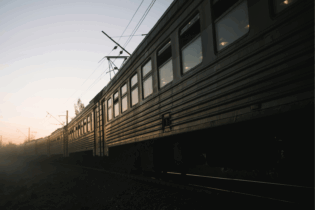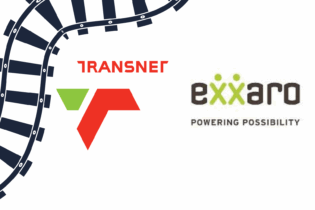- Revenue up 9,4% to R50,2 billion
- Rail volumes grow to 207,7 million tonnes
- Ebitda up 11,5% to R21,1 billion.
- Capital investment increased 23,4% to R27,5 billion.
- Revised seven-year infrastructure investment programme to R307,5 billion
- Gearing at 44,6% and cash interest cover ratio strong at 3,7 times, in line with expectations.
- Created and sustained 28 493 jobs
- Regenerated 151 139 MWh – enough to power a township the size of Alexandra for a year.
Transnet SOC Ltd today revealed an impressive set of results for the year ended March 2013, driven by steady growth in rail volumes and improving operational efficiency at the ports, while it powered ahead with its infrastructure investment which enabled job creation. This was achieved despite challenging economic conditions.
Revenue for the period increased to R50,2 billion from R45,9 billion in the previous year as Transnet Freight Rail’s road-to-rail programme continues to drive containers and automotive traffic off the country’s roads. Importantly, Freight Rail’s Containers and Automotive segment recorded a 21,6% growth to 10,7 million tonnes (mt). This takes Transnet’s rail volumes for the period to an unprecedented 207,7 mt.
During the year, Freight Rail revised its business model into customer-facing business units to support the execution of the Market Demand Strategy. The focus is on pursuing opportunities for volume growth; enhancing service levels, productivity and efficiency gains.
Elsewhere, the company increased its iron ore and manganese rail volumes by 7,3% to 64,3 mt thanks to rising demand for manganese and improved efficiencies in the iron ore channel, especially locomotive utilisation which improved by 12,8%. However, coal volumes disappointed with a 1,9% growth due to the prevailing market conditions in the sector in spite of a 22% increase in demand from Eskom and higher levels of operational efficiency.
We have identified certain opportunities for further efficiency improvements including introducing our 200 wagon trains on the coal line to run directly from the mine to the port, instead of going through Ermelo. Our projections are that the project, which is currently being tested, will cut cycle times from the current 65 hours to about 41 hours and add about 5 mt to our volumes.
Despite poor economic conditions, a marginal improvement in volumes through our ports and a decline in petroleum volumes through our pipeline network, Transnet met 91,8% of the audacious volume targets it had set itself.
As a result of the operational performance and a cost saving of R2,2 billion, Transnet’s key measure of profitability, earnings before interest, taxation, depreciation, and amortisation (Ebitda) surged by 11,5% to R21,1 billion. The growth in profitability is far in excess of economic growth (Gross Domestic Product) and far above the last recorded rate of inflation.
Profitability was aided by an aggressive cost management drive which yielded a R2,2 billion saving for the year despite rising operating costs. Costs increased by 7,9% to R29,1 billion driven by higher personnel costs due to growing staff numbers and training spend as well as an average 8,4% settlement for employees in the bargaining unit. Other factors included increased energy costs due to higher fuel and electricity prices and materials costs which were driven by steel prices among others.
In line with Transnet’s commitment to continue with its infrastructure rejuvenation programme through the economic cycles, the company powered ahead with its infrastructure investment programme, spending a record R27,5 billion – a 23,4% increase from last year’s R22,3 billion. This takes the total investment over the last seven years to an unrivalled R136,5 billion.
Transnet revised is capital investment programme to R307,5 billion from R300 billion in the previous year, confirming the company’s commitment to its ‘counter-cyclical’ investment strategy to create capacity ahead of demand. This will enable economic growth in line with government policy.
Transnet signed a contract with Chinese manufacturer China South Railways for the supply of 95 electric locomotives, following a competitive tender process. The company is currently adjudicating bids for the acquisition of 1 064 diesel (465) and electric locomotives (599) for Freight Rail’s General Freight Business.
Other infrastructure rejuvenation highlights include:
- Iron ore line expansion to 60 mt – The old sampling building at the Port of Saldanha has been demolished, the rail triangle has been completed to enable the more efficient handling of trains and the installation of electrical equipment to reduce electrical consumption at the Port.
- Coal line expansion to 81 mt – Engineering designs for the expansion to 81mt are being undertaken. The project is expected to be completed by the last quarter of 2018.
- Acquisition of Wagons for MDS (2013 only) – Transnet completed building 2 235 of the 2 346 wagons approved for the year. These include automotive wagons, flatbed wagons to rail containers and CR type wagons for transporting mineral and mining products.
- Acquisition of 7 tandem-lift ship-to-shore cranes for Pier 2 – All seven tandem-lift ship-to-shore cranes were assembled and are operational.
- New Multi-Product Pipeline – The 24-inch trunk-line from Durban to Jameson Park was operationalised in January 2012 and transported over 2,7 billion litres of diesel for the year.
- Acquisition of the old Durban International Airport site was concluded at a total cost of R1,85 billion. Transnet plans to develop a dig-out port to address container, liquid bulk and automotive demand.
The company’s investment programme is backed by a comprehensive funding programme on the strength of its own financial position without government guarantees. During the year Transnet raised R14,6 billion from debt capital markets. This year’s programme included the issuance of a 10-year R8,2 billion bond in the United States as part of the company’s Global Medium-Term Note programme. The issuance made history as it became the largest by a South African corporate and its 4% coupon rate was also the lowest.
The rate and subscription to our bonds is testimony to management’s success in strengthening the company’s finances, and the attractiveness of its portfolio of projects as an investment destination, especially among foreign investors.
The rest of the funding requirement was raised from various sources including development finance institutions, domestic bonds, export credit agencies and commercial paper. This is in line with the company’s commitment to diversify its sources of funding. For the 2013/2014 financial year, the company intends to raise R15,6 billion.
As a result of the year’s activity, the gearing ratio edged higher to 44,6% as expected and remains well within the company’s ceiling of 50%, reflecting ongoing capacity to raise funding for its infrastructure investment programme.
On the jobs front, Transnet created 28 493 direct and indirect jobs. This includes 3 804 or a 7,5% increase in its permanent employee numbers which now stand at 54,726. Encouragingly, our various training programmes included 2 042 apprentices and 433 engineering bursars in our talent pool.
Thanks to the introduction of new energy efficient locomotives and a focused energy efficiency drive across the company, we reduced our electricity consumption by 3,3% despite higher volumes. Encouragingly, the new locomotives on the iron ore and coal lines regenerated 151 139 MWh of electricity – enough to power a township the size of Alexandra for a year. Freight Rail’s market share gains from road to rail during the year reduced the country’s transport sector carbon emissions by 206 540 tC02e.
The operating and financial performance of the Company for the year is encouraging given the prevailing economic conditions. This provides Transnet with a stable base from which to continue the execution of the Market Demand Strategy in the years ahead.







